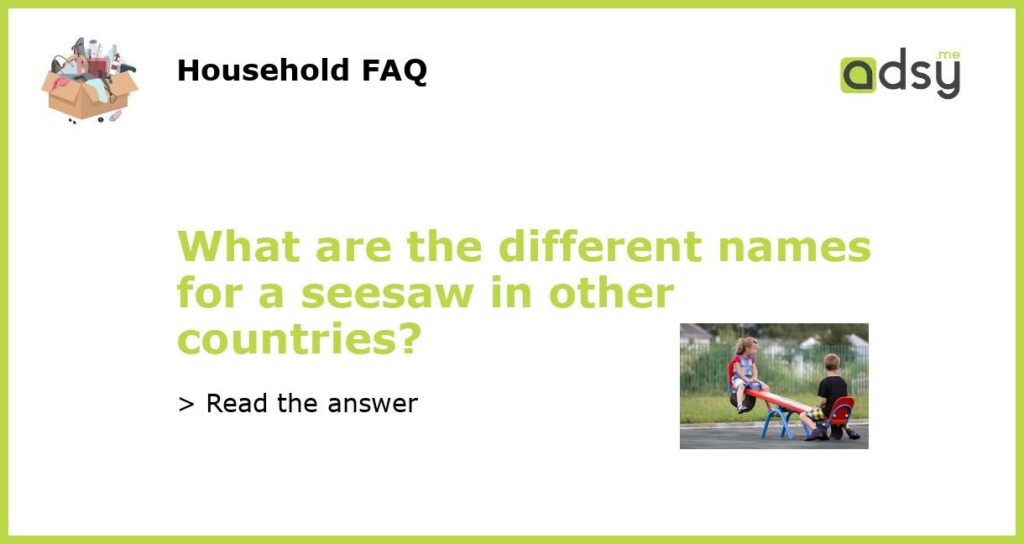What is a seesaw?
A seesaw, also known as a teeter-totter, is a common playground equipment consisting of a long, narrow board supported by a pivot in the middle. It is designed for two or more children to play on, with one child positioned on each end of the board. The seesaw operates on the principle of balance, with the weight of one child causing their end of the board to go down, while the other end rises.
The different names for a seesaw
While the term “seesaw” is widely used in English-speaking countries, different countries around the world have different names for this popular playground equipment. Here are some of the alternate names that are used in various regions:
La Bascula in Spain
In Spain, a seesaw is commonly referred to as “La Bascula”. The term “La Bascula” translates to “the balance” in English, which perfectly captures the essence of how a seesaw functions. Children in Spain enjoy playing on La Bascula in parks and playgrounds across the country.
Wipwap in the Netherlands
In the Netherlands, a seesaw is commonly known as a “Wipwap”. This name derives from the Dutch words “wip”, meaning “to lean” or “to tip”, and “wap”, meaning “a wooden board”. The term Wipwap accurately describes the back and forth motion of a seesaw.
Balançoire in France
In France, a seesaw is called a “Balançoire”. The term Balançoire comes from the French verb “balancer”, which means “to swing”. This name reflects the swinging motion that children experience when playing on a seesaw. Balançoires can be found in many French parks and playgrounds.






